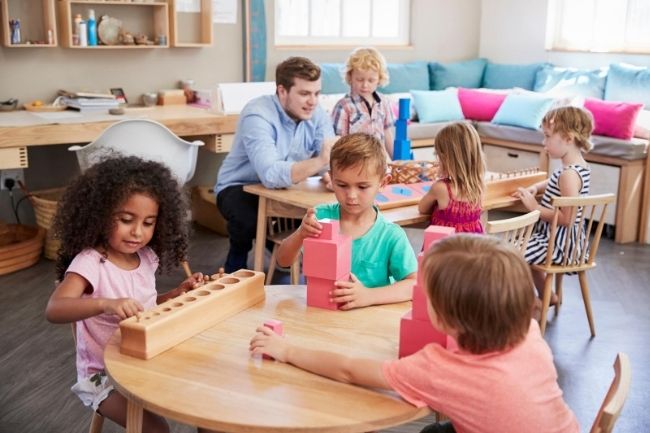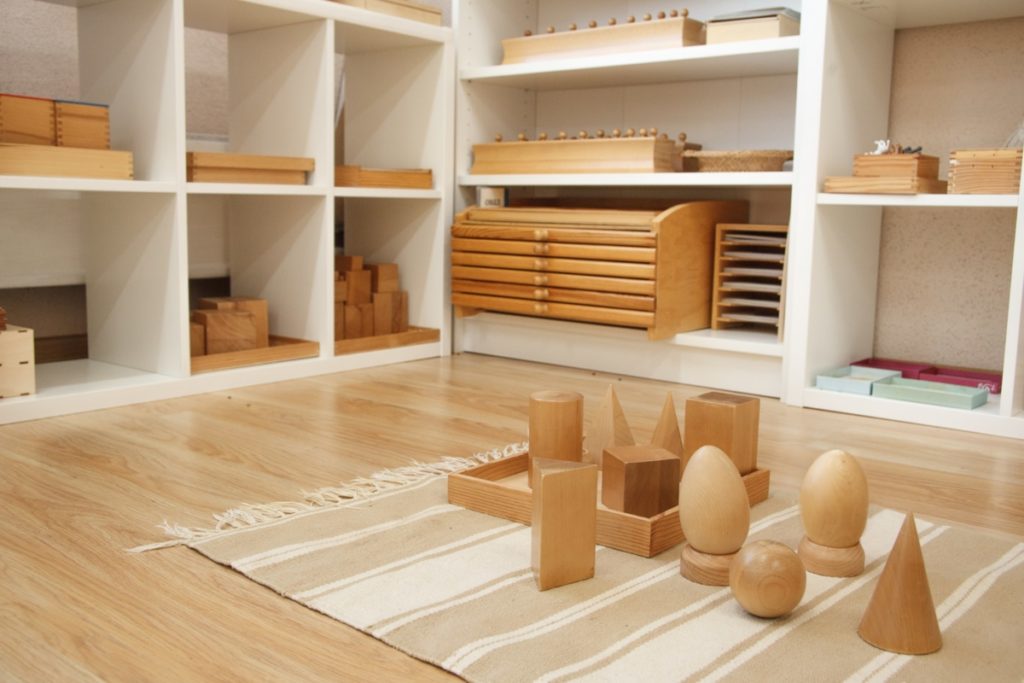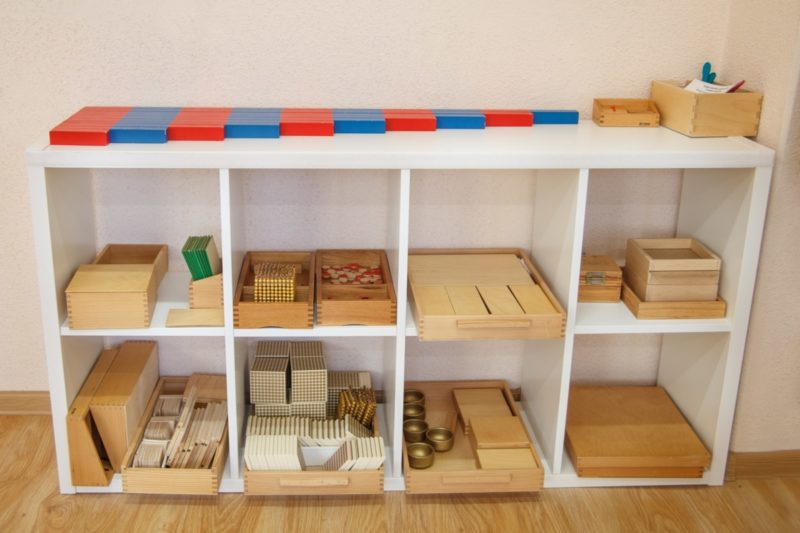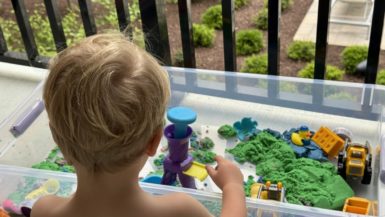Do you have trouble coming up with new activities to do with your toddler? Are you looking for a way to keep them entertained and engaged while also promoting their development? Try toy rotation!
Montessori toy rotation is a great way to keep things fresh for both you and your child. Not only does it encourage creativity and exploration, but it can also help with problem-solving and motor skills. Interested in learning more? Keep reading!
What is Toy Totation?
Toy rotation is a system where you only keep a certain number of toys out at a time and switch them out every few days. This way, your child always has something new to play with and they don’t get bored with their toys.
There are a few different ways you can do toy rotation. You can either have a designated area for your child’s toys and switch them out when they’re not looking, or you can involve your child in the process and let them choose which toys they want to play with that day.
Toy rotation is a great way to keep your child engaged and encourage their development. It also eliminates the need for constant toy purchases, as your child will always be playing with something new.

Benefits of Using a Montessori Toy Rotation System
When it comes to child development, there is no one-size-fits-all approach. Each child is unique and will develop at their own pace. However, certain methods can help to encourage and support a child’s development. One such method is using a Montessori toy rotation system.
There are many benefits to using a Montessori toy rotation system.
1. Reduce Clutter and Save Money
The first benefit is that it can help to reduce clutter and save money. When children have too many toys, they can quickly become overwhelmed and disinterested in them.
By rotating their toys, you can keep their play area tidy and only bring out a few toys at a time. This also helps to save money as you won’t need to buy as many Montessori toys.
2. Encourage Imagination and Creativity
Another benefit of using a Montessori toy rotation system is that it can encourage imagination and creativity. When children have access to fewer toys, they are more likely to use their imagination to play with them in new ways.
This helps to promote creativity and problem-solving skills. This helps to stimulate their imaginations and encourages them to think outside the box.
3. Foster Independence
A Montessori toy rotation system can also foster independence. By allowing children to choose which toys they want to play with, they can learn to make decisions for themselves. This helps them to develop a sense of independence and self-confidence.
4. Encourage exploration and learning
Another benefit is that it can encourage exploration and learning. Children are naturally curious and love to explore their environment. By providing them with a variety of different toys, you can help to stimulate their curiosity and encourage them to learn about new things.
5. Supporting Developmental Milestones
Finally, using a Montessori toy rotation system can help to support developmental milestones. When children are allowed to play with a variety of toys, they can explore different concepts and skills. This helps them to reach important milestones in their development.
Overall, there are many benefits to using a Montessori toy rotation system. It can help to reduce clutter and save money, encourage imagination and creativity, foster independence, and support developmental milestones. If you are looking for a way to support your child’s development, consider using a Montessori toy rotation system.

How to get started with Montessori toy rotation
If you’re interested in using the Montessori method at home, one key component is toy rotation. This means having a selection of toys that your child can play with and then swapping them out on a regular basis. Doing this helps to keep your child’s interest in their toys fresh, and prevents them from becoming bored or overwhelmed with too many toys at once.
Here’s a quick overview of how to get started with toy rotation in your home:
- Choose a selection of toys that your child will enjoy. This could be anything from puzzles and games to dolls and action figures.
- Put all of the chosen toys into a box or storage container.
- Every few days, swap out one or two of the toys in the box for new ones.
- Encourage your child to play with the new toys, and explain that they can only play with them for a certain period of time before they need to be put away again.
- When it’s time to put the toys away, help your child to do so neatly and efficiently.
Following these simple steps will help you to introduce toy rotation into your home in a way that is easy and fun for both you and your child.
What are toy rotation containers?
Toy rotation containers are designed to help keep your child’s play area organized and tidy. They are perfect for storing toys, books, puzzles, and other small items. The clear plastic sides make it easy to see what is inside, and the lid helps keep everything dust-free. Toy rotation containers are a great way to keep your child’s toys organized and in good condition.

Different types of toy rotation containers
There are two main types of toy rotation containers: those with shelves and those without. Shelf-type containers usually have four or more shelves, making them great for storing larger items such as stuffed animals or building blocks. Non-shelf-type containers typically have one or two compartments, which are perfect for smaller items such as toy cars or action figures.
How to choose the right toy rotation container
When choosing a toy rotation container, it’s important to consider the size of your child’s play area and the types of toys they have. If you have a large play area, you’ll need a bigger container with more shelves.
If your child has mostly small toys, a smaller container with fewer shelves will suffice. It’s also important to consider the material of the container.
Plastic containers are durable and easy to clean, but they can be more expensive than other materials.
Wood or metal containers may be less expensive, but they are not as durable and may not last as long.
Examples of Montessori-approved toys
There are a wide variety of Montessori-approved toys that can be used in a toy rotation system. These include:
If a toy isn’t on the list of recommended Montessori toys, here’s what you should do with it...
Not every toy needs to be Montessori-approved in order to be used in a toy rotation system. If you have a toy that your child enjoys but it isn’t on the list of recommended Montessori toys, you can still use it in your rotation system.
However, you may want to limit the amount of time your child plays with it so that they don’t become too attached to it. This is exactly what Montessori education is about.
Additionally, you can use this as an opportunity to teach your child about the importance of taking care of their belongings. Explain to them that if they don’t take care of the toy, it won’t last as long and they won’t be able to play with it as much. This will help them to understand the importance of taking care of their belongings and may even encourage them to be more careful with their toys in general.
FAQs:
When should you start toy rotation?
You can start toy rotation as soon as your child is old enough to understand that they can’t play with every single toy all at once. This is usually around 12 months to 2 years old.
How many toys should you rotate?
There is no right answer here. It really depends on the number of toys you have and how often you rotate them.
As a general rule of thumb, try to keep the number of toys around 10. This may seem like a small number but remember – quality is more important than quantity. Plus, you can always add in new toys as your child gets older.
How many toys should you keep out?
This depends on your child’s age and attention span. For toddlers, it’s best to start with 4-5 toys and gradually increase the number as they get older. For preschoolers, you can keep around 10 toys out at a time.
How often should you rotate toys?
How often you rotate toys is completely up to you. Some parents do it every few days, while others wait a few weeks or months. It really just depends on your child’s attention span and how quickly they get bored.
If you’re not sure where to start, try rotating toys every few days or once a week. You can always adjust as needed.
If you’re looking for an easy way to make your child’s toys more engaging, try Montessori toy rotation. This approach will keep your child interested in the same toys for longer periods of time and help them learn new skills. Give it a try now and see how well it works for your family.






Leave a reply